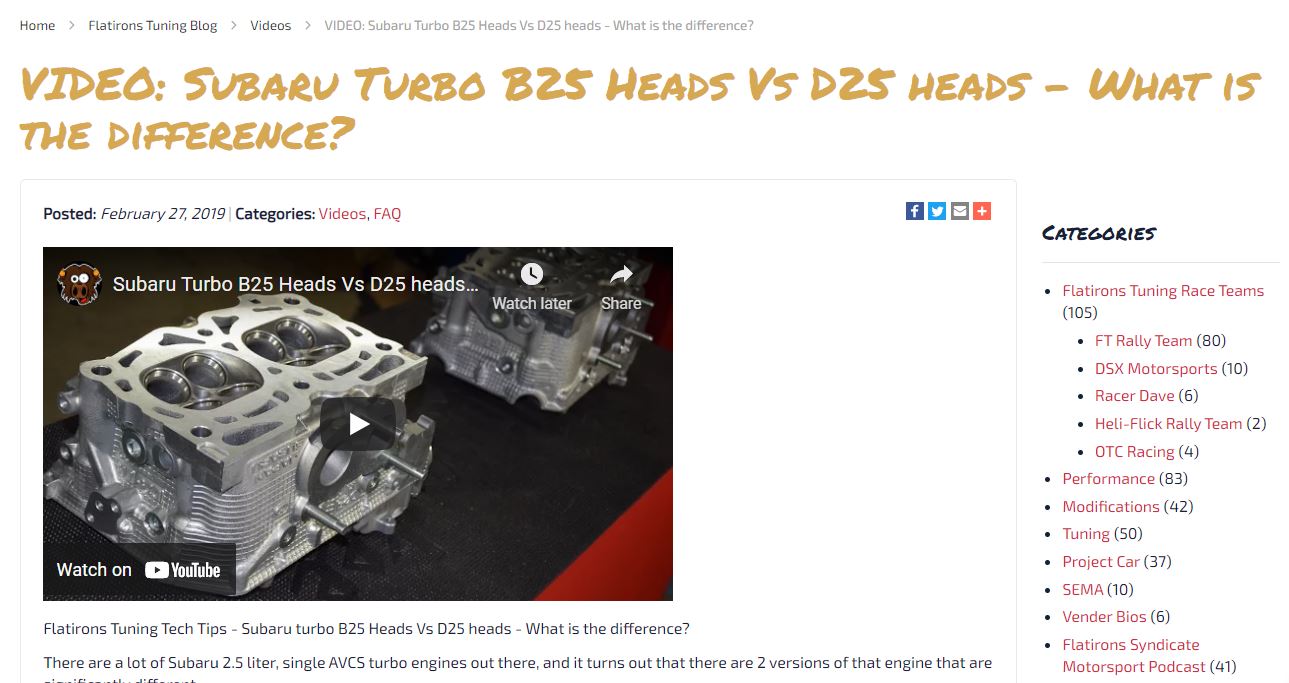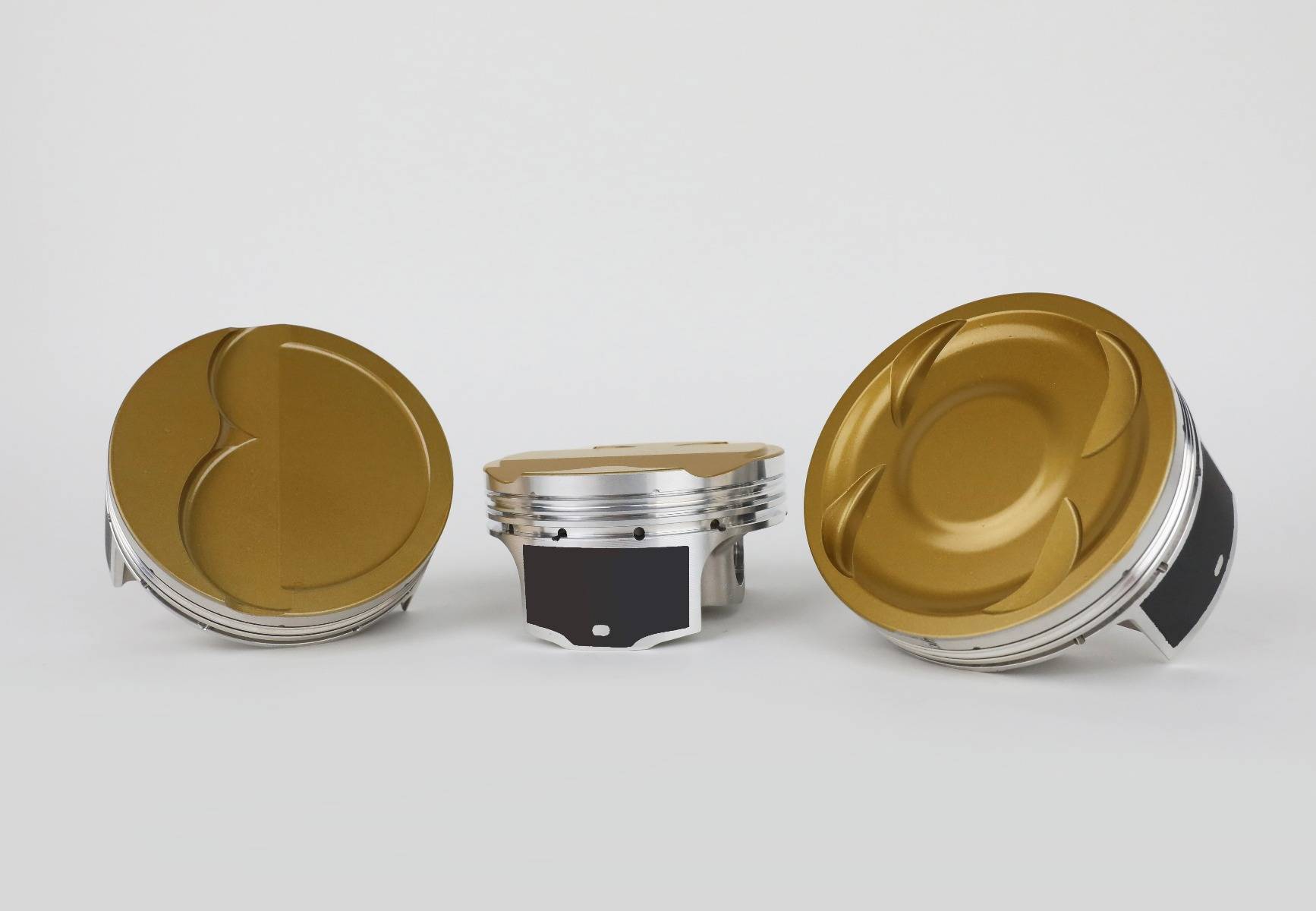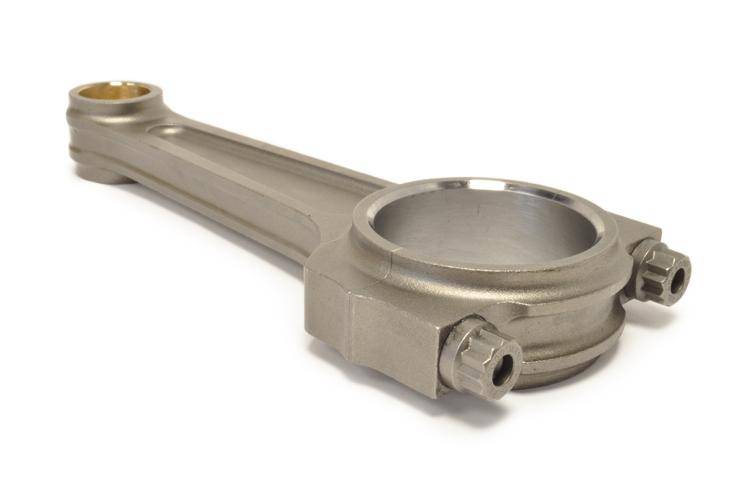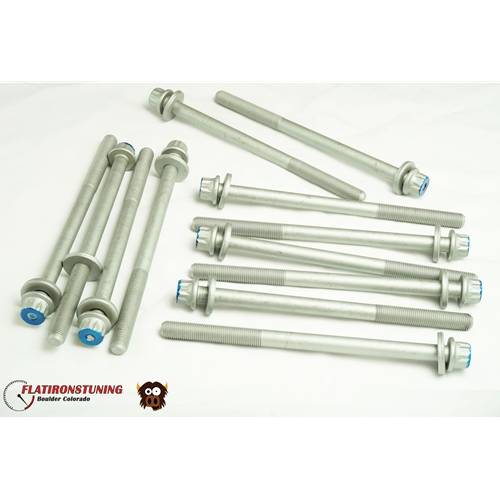We use cookies to make your experience better. To comply with the new e-Privacy directive, we need to ask for your consent to set the cookies. Learn more.
A guide to the Flatirons Tuning Rotating Assembly
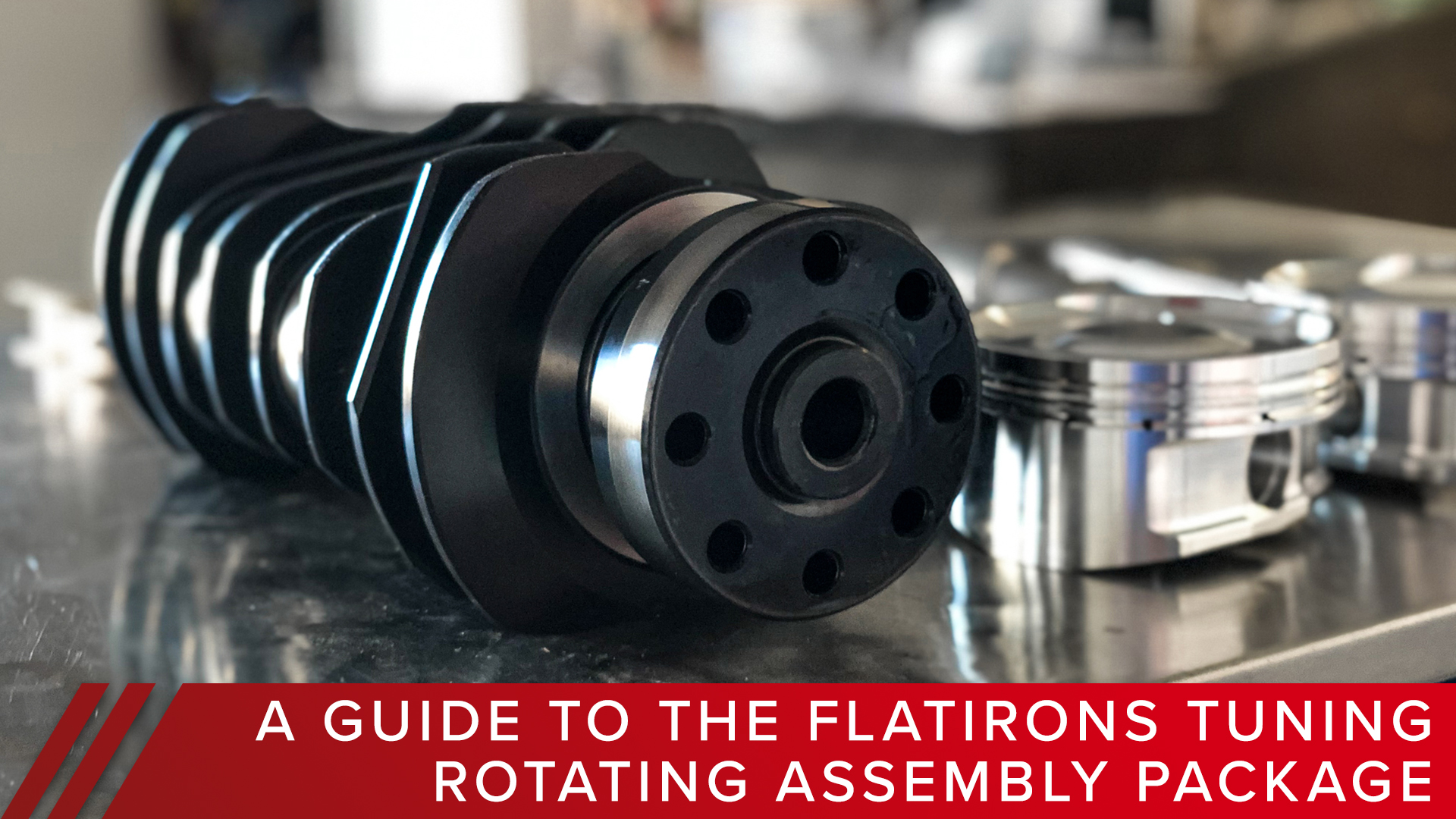
If you are looking to build or assemble your Subaru engine, there are no shortage of options of components to use. We realized a while back that it would be a lot easier to select the components that you needed to build your engine if they were all in one place, so we created our "Flatirons Tuning Rotating Assembly" which grouped together most any of the options that we had to offer into one place.

But now we wanted to take some time to talk about those options, and offer up a bit of perspective about those options if you needed any help to make sure that you were getting the correct parts for your build.
And as always, if you still have any questions, you can always reach us through our Live-Chat feature on the site.
First up, the crankshaft
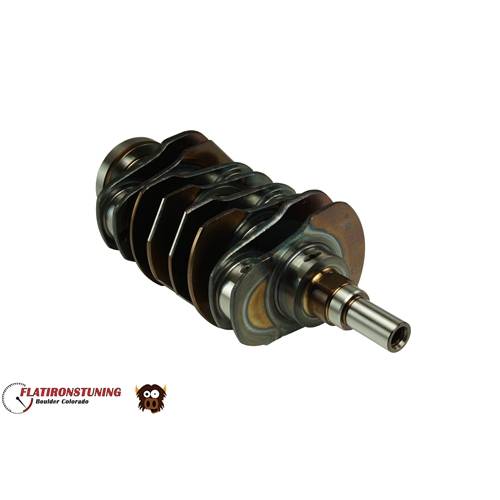 The stock Subaru Crankshaft from the EJ257 is the strongest, and best build part of the rotating assembly as it comes from the factory. This is especially true now that these cranks come with a surface hardening treatment done to them as well. When Subaru introduced this in roughly 2009, the crankshafts were Nitride treated. Subaru later switch to heat treating, and has now gone back to Nitride treatment for the surfaces of all of the OEM cranks.
The stock Subaru Crankshaft from the EJ257 is the strongest, and best build part of the rotating assembly as it comes from the factory. This is especially true now that these cranks come with a surface hardening treatment done to them as well. When Subaru introduced this in roughly 2009, the crankshafts were Nitride treated. Subaru later switch to heat treating, and has now gone back to Nitride treatment for the surfaces of all of the OEM cranks.
The stock EJ257 crankshaft can handle a lot of power, and you really would not need to consider any alternatives until you power target is well over 500 whp. At that point you would be looking for a billet crankshaft that would also incorporate cross-drilled oiling most likely.
Click Here to see the Arrow Billet Crankshaft
Balancing is the other thing to consider. One thing that Subaru has pioneered with their engine components is to have a high degree of precision machining for all of their engine parts. This is how they can have a standard set of bearings for instance. This is because they machine the bearing surfaces to a high degree of precision, and that in turn allows you to use a standardized thickness of bearings in most cases (precise machining of the case and rods is also a part of this). The crankshaft is also balanced to a reasonably tight tolerance, but this is one aspect that a good machine shop can improve on compared to Subaru's standard spec.
We work with ASF Machine to offer OEM Subaru crankshafts that are balanced to a very tight tolerance (usually to within 1 gram). This, especially when paired to a balanced rotating assembly (pistons and rods, etc.) can help to significantly reduce any vibration in the rotating assembly. Balancing the crank in and of itself will be a good improvement for most any engine. But if you intent to increase your maximum engine rpm, the a balanced crankshaft, and ideally a full dynamic balance of your entire rotating assembly would be recommended.
Click Here to see the ASF Balanced Crankshaft
Pistons
There are a lot of pistons to choose from if you are building your engine, and we do our best to offer the best and most common options on our site. I can honestly say that there really not any bad options when it comes to a forged EJ257 piston, but here are some things to consider if you are making your selection.
First, piston size
If you are using a new shortblock, then a piston in the standard size will most likely be what you need. For the EJ257, this would be a 99.5mm piston. If you are looking at the Manley "A" and "B" pistons, those would have to be matched up to the markings on your brand new case (yes, this only applies to new case halves), and if you would like to use these pistons, we can match up the "A" and "B" pistons to the case that you add to your rotating assembly before shipping these out to you.
Subaru uses and "A" and "B" spec piston when assembling their OEM shortblocks as well, and currently only Manly has a forged option that uses this same spec. The "A" and "B" indicate a cylinder that is either very slightly smaller or very slightly larger than the factory spec, so matching the piston to the bore will allow a precise piston to wall tolerance.
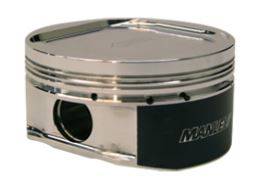
Click Here for Manley "A" Pistons
Click Here for Manley "B" Pistons
If the case-halves you are using for your build have any miles on them, you cannot assume that the "A" and "B" markings are still correct, and we strongly recommend having a machine shop inspect your case before ordering pistons for your build.
As an engine runs, there are various ways that a cylinder can wear. As an example, the cylinder could have some minor wear such that the cross-hatching in the cylinder is not as present as it should be, or at an extreme, there can be more wear on the top and bottom of the cylinder (something that a boxer engine is a bit more susceptible to since the cylinders sit horizontally instead of vertically in the engine bay) which can effectively "oval" the cylinder. Or at an extreme, or if there has been a failure in the engine, a cylinder can get scratched such that the cylinder has to be re-bored and honed before you can install new pistons and rings in it.
Above all, it is hard to tell the condition of all of your cylinders without special measuring tools, and that is why we recommend having this done by an experienced machine shop. Only once you have that information back, and know if your cylinder block will need to be over-bored, and by how much, can you then order the correct sized pistons.
The standard size piston is 99.5mm for the EJ25 block, and the oversized options are 99.75mm and 100.00mm.
Generally, you would want to have your block inspected, then order your pistons, and typically your machine shop will want to have the pistons on hand when they are machining your cylinders so they can make sure that they bore each cylinder for the specific piston that will go in it in order to ensure the proper piston to wall tolerance.
Virtually every set of aftermarket pistons will come with rings, and we would also strongly encourage you to have your machine shop measure the rings, and machine them if necessary to set the correct ring gap for each cylinder.
Compression Ratio
If you are selecting your pistons, the other main spec to consider to make sure that you get the set of pistons that are going to work best for your application is compression ratio. Generally speaking, we recommend getting a piston that is as close as possible to your stock compression ratio. In the case of the EJ257, that is 8.2:1, and in the case of the EJ255 with D25 heads (for more information on this, please check out our blog on the difference between the B25/V25/W25 heads and the D25 heads) 8.4:1. This is especially important if you are going to be running pump gas in your engine.
There are higher compression pistons available for most any manufacturer, but we only recommend even considering those as an option if you are going to be running a more detonation-resistant fuel than standard pump gas, such as E85 the majority of the time.
If you are not running a much higher octane fuel, like race gas (starting at 100 octane) or E85, then the performance of your engine will be much more limited on pump gas if you increase your compression ratio.
Piston coatings and off-set wrist pins
There are the other options to consider if you are trying to decide between two different piston options. Many forged pistons will come with a skirt coating that is designed to reduce cylinder wear. This is definitely a nice feature. Some pistons will also have a ceramic coating on the piston dome (the JE Ultra Series pistons for example). This dome coating is designed to help prevent heat transfer into the piston during combustion to help keep the heat in the cylinder where it can increase efficiency and make more power. It is a nice option, but it is certainly not required.
Click Here to see JE Ultra Series Pistons for the EJ257
One thing that can happen with forged pistons is that you can get more engine noise at initial start-up until the engine comes up to temperature. This is often referred to as "piston-slap". This is in part caused by the slighter larger piston to wall tolerance that forged pistons require, but it is also partly caused when the wrist pin sits exactly in the center of the piston in a boxer engine. For that reason, some piston manufacturers use an off-set wrist pin which puts the wrist pin just slightly off the center of the piston. This can reduce skirt wear of the piston and cylinder, and it can help to reduce "piston-slap" at start-up.
While this is a nice option, it is not required by any means. CP pistons for example do not have an off-set wrist pin, and have proven to be able to hold a lot of power.
Connecting rods
If you are using forged pistons for your build, most likely you are also going to use aftermarket rods. These typically come in two styles, H-Beam and I-Beam.
H-Beam rods are the most common, and the least expensive aftermarket rods. Eagle and Manly H-Beam rods have largely become the standard, and they offer good strength at a lower weight compared to a stock Subaru rod. The standard H-beam rod is typically a good choice for power targets between 400 - 450 whp, and where the maximum rpm is not going to increase above roughly 7,000 rpm on an EJ25 engine.

Manly now offer's an H-Tuff rod which still uses an H-beam design, but has more material, primarily on the big end of the rod, which makes it more durable. H-Tuff rods also come with ARP 2000 cap fasteners standard which is another nice feature. These are ideal if your power target is just a bit higher say between 450 and 500 whp.
If you want to increase your engine rpm, then an I-beam rod is going to be more ideal because they are a more durable design, and are more resistant to twisting under high stress than the H-beam rods. This would be an ideal rod if you are looking to spin your engine above 7,500 rpm or are wanting to make well above 500 whp. In this category the Manly Turbo-Tuff rod has largely become the standard used.
Click Here to see Manley Turbo Tuff Rods for the JE20 and EJ257
Main and Rod Bearings
As mentioned when we were talking about the OEM crankshaft, it is machined to a very tight tolerance, so when you are picking bearings, you can use a standard size set most of the time. And when it comes to manufacture, you cannot go wrong with either ACL or King. Both ACL and King have been used by numerous engine builders and they are both of very high quality.
Click Here for ACL Main Bearings for the EJ20 and EJ25
Click Here for ACL Rod Bearings for the EJ20 and EJ257
It is worth mentioning that both ACL and King do offer bearings that are designed with a thinner shell to give you .001" or .025 mm of additional space (total). If you are not sure if your power goal requires looser bearings, we recommend having a conversation with your engine builder or machine shop to make sure that you get the correct size bearings, and for most builds, the standard size bearings are typically the best.
Click Here for King Main Bearings for the EJ20 and EJ257
Click Here for King Rod Bearings for the EJ20 and EJ257
It is also worth mentioning that if you do open up your bearing tolerances, you will most likely need a larger volume oil pump to maintain your target oil pressure. This is because the looser bearing tolerances will reduce the restriction on the oiling system.
King also now offers a special P-Max coating as an option on their bearings which is a coating of ceramic nano-composite particles that function as a fourth layer to enhance wear resistance, which is also a nice option.
Click Here to see the King P-Max coated Main Bearings for the EJ20 and EJ257
Click Here to see the King P-Max coated Rod Bearings for the EJ20 and EJ257
Head Studs
The stock Subaru Head-Studs are a very high quality torque-to-yield bolt. It is not generally recommended to re-use them, but it can be done. They are a very cost effective option, and they should be fine for lightly modified engines. But if you are looking to bolt on a larger turbo, make a few more psi of boost pressure, etc., then an up-graded fastener would be recommended.
Click Here to see the OEM Subaur Head Bolts
 The ARP2000 head-studs are a tried and true option for Subaru EJ engines, and the Roger Clark Motorsport 11mm studs are another good option as well.
The ARP2000 head-studs are a tried and true option for Subaru EJ engines, and the Roger Clark Motorsport 11mm studs are another good option as well.
If you are wanting to make more than about 22 psi of boost pressure, or if your power target is going to be between 450 whp and 550 whp, then it would be beneficial to make sure that you are using the highest grade 11mm stud available. That is either the ARP Custom Age 625 studs, or the Roger Clark Motorsport 11mm extreme head studs. Either one of those is a good option if you want to take your engine up to the top of what the stock cylinders or 11mm head stud threads can do.
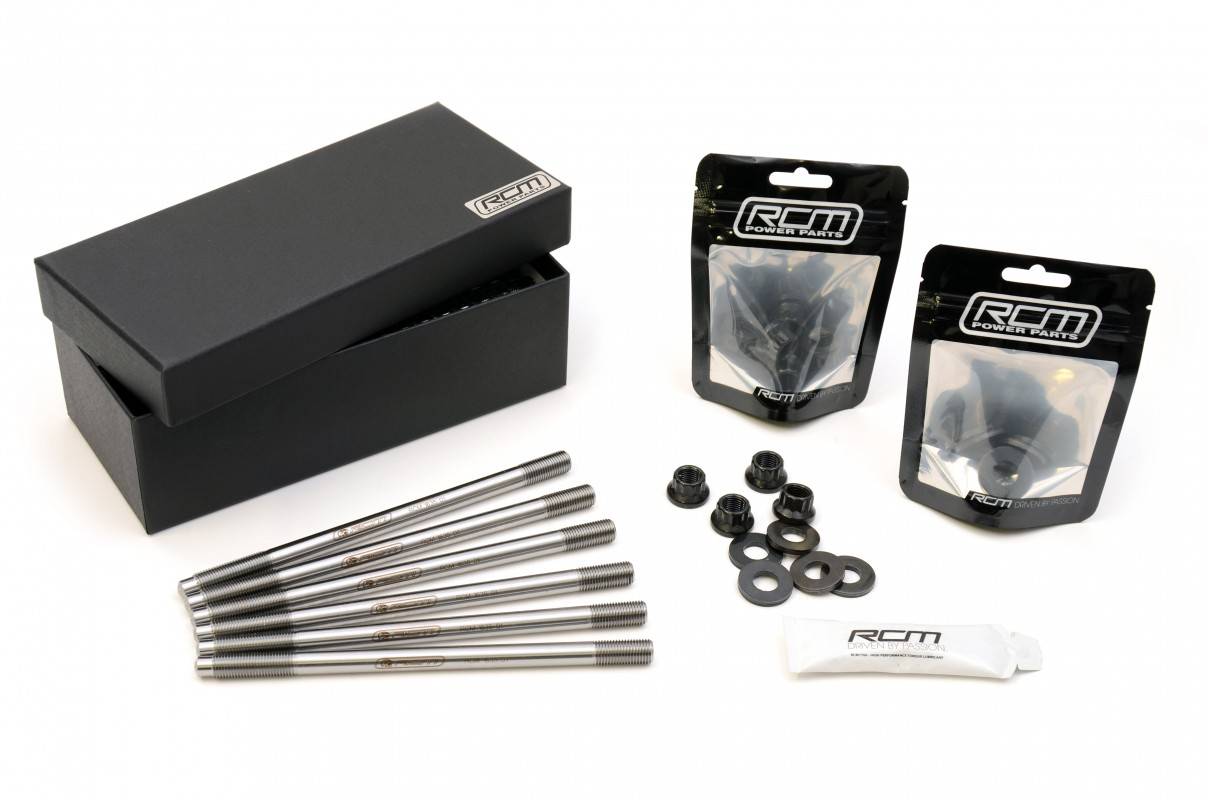
Click Here for the standard RCM 11m head stud Kit
Click Here for the RCM 11mm Extreme head stud kit
Crank Pulleys
For most moderate engine builds either the stock crank pulley or a standard light weight crank pulley will work well. If you are going to be using a light weight flywheel, it can be somewhat beneficial to use a crank pulley that is not as light as possible. Sometimes using a very light flywheel and light crank pulley can cause issues.
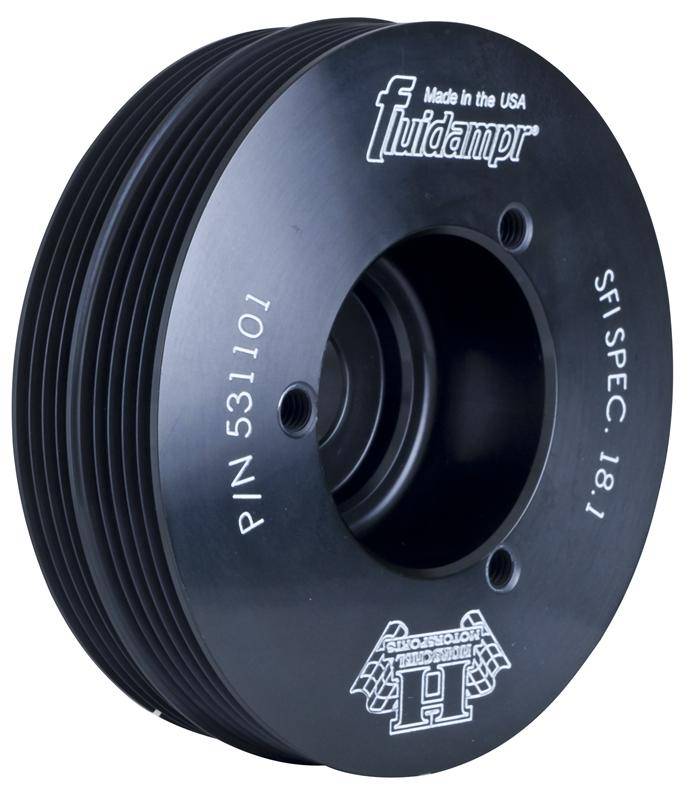 If your power target is over 450 whp, and especially if your max rpm is going to be higher than 7,500 rpm, then a crank pulley designed with a damper is usually a good idea. The Fluidamper is the standard here, but the ATI damper is another good option.
If your power target is over 450 whp, and especially if your max rpm is going to be higher than 7,500 rpm, then a crank pulley designed with a damper is usually a good idea. The Fluidamper is the standard here, but the ATI damper is another good option.
Which oil pump?
We have put together a couple of blogs about the different Subaru oil pumps, and how the different sized pumps relate to oil pressure.
Click Here for our blog with everything you need to know about Subaru Oil Pumps
Click Here for our blog talking about oil pumps and oil pressure
Generally speaking, if you are not changing the demands of your oiling system with something like looser bearings, etc., the best starting point is the same size oil pump that your car came with. If you have seen reasons to be concerned about oil pressure, then you may want to go with a larger oil pump rotor. If you do go with a larger pump, we recommend monitoring oil pressure with a gauge at a minimum so you can keep an eye on what your oil pressure is doing.
There are a lot of variables in this area, and if you don't have an oil pressure gauge all ready, we definitely recommend them for any built block, and whenever you are changing an aspect of the oiling system.

Click Here for the Subaru OEM 10mm Oil Pump
Click Here for the Subaru OEM 11mm Oil Pump
Click Here for the Subaru OEM 12mm Oil Pump
For all sizes of the Subaru Oil Pump (10mm, 11mm, and 12mm), Roger Clark Motorsport now offers a modified version. They go through the oil pump, and most importantly replace the stock relief valve with one of their design that moves more easily than the stock part. That helps to ensure that the relief valve can control oil pressure more precisely, and that makes the RCM Oil Pump a great option, regardless of the size.

Click Here for the RCM 10mm Oil Pump
Click Here for the RCM 11mm Oil Pump
Click Here for the RCM 12mm Oil Pump
Which Head Gaskets?
Every Head Gasket that we offer, from OEM on up, is a multi-layer steel gasket (MLS), and they have all had good results. In fact, we have had very good luck with the OEM gaskets for a number of higher power applications. If you are looking for a gasket that offers a better, more even seal at the cylinder than the OEM gasket, the RCM or JE Pro-Seal head gaskets are both great options.
Also, if you need a head gasket that is thicker than stock because the heads and/or block have been machined, or because of the match between the pistons and cylinder head that you are using, the both RCM and JE have options there too.
For the Roger Clark Motorsport head gaskets, the stock thickness gasket is going to be the .78mm gasket, and the thicker options are either 1.1mm or 1.5mm. 1.5mm is typically only used for hybrid swaps where you are matching an STI block and pistons to EJ20 heads.

JE has similar options for thickness options, but be aware that they have one set of gaskets for 99.5 - 99.75mm pistons that is only a 100mm diameter opening in the gasket. Because that diameter opening would not work with a 100mm piston, JE has a different head gasket with a slightly larger diameter (101mm) for 100mm pistons only. With JE, the .039" head gaskets would be the stock thickness, and the .051" head gaskets would be roughly equivalent to the RCM 1.1mm gaskets.
That is a lot of information, but hopefully it has helped you build out your rotating assembly. Again, if you have any questions not covered here, please feel free to reach out to us.
Stay Tuned!
- Jon Cooley


